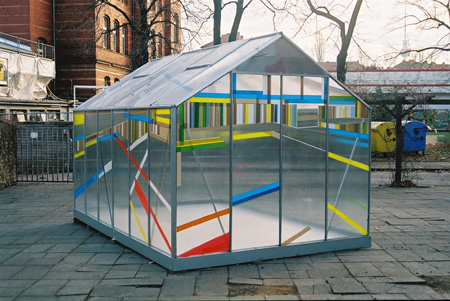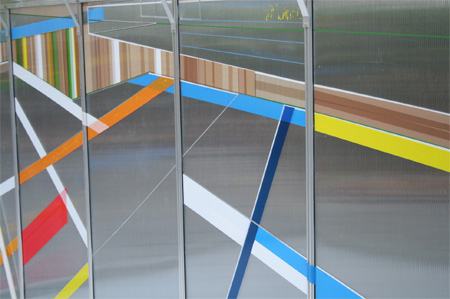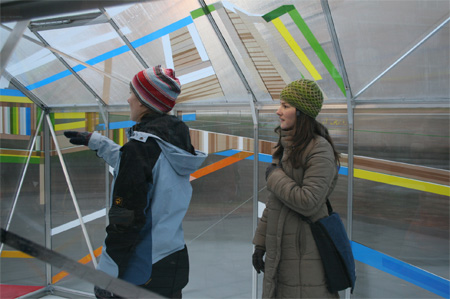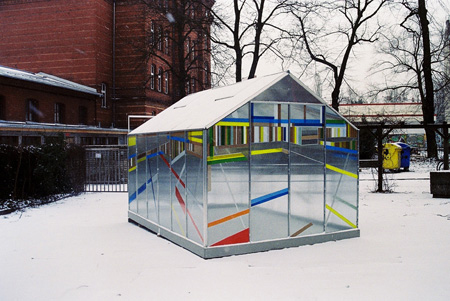
gewächshaus
für
zeitgenössische kunst
![]()

![]()
urban
intervention |
2.12.06 - 21.2.2007
Carlos
Silva
Initially trained as an architect, Carlos Silvas’ work now takes as its point of departure the city as a modular set of numbers and equations. A typical western city is constructed in codes; architectural equations that tell us the proper proportions of things. Seen in this light the city is not a random assortment of cubes and rectangles it is full of complex interrelations governed primarily by mathematics.
We
don’t need to look much further back than the promised architectural
utopias of the early twentieth century or indeed, the idealization of
geometry and proportion in the renaissance to recognize the deep currents
running through humanities desire for pleasing proportions. But not
only do these geometries, equations and “rules” of design
have aesthetic consequences it is their versatile functionality that
makes them so useful in the complex mega-cities of today and also what
interests Silva.
At
the greenhouse at super bien! he has selected what could be
described as a random point in space; the middle of this greenhouse\courtyard
in Berlin. And has used this spot as a viewpoint to construct a drawing
on the transparent walls based on the surrounding architecture. Rather
than merely render the buildings, he has improvised a kind of homage
to the underlying structures of the man-made space. Further reinforcing
this approach is the use of commercial tape as a drawing tool, whose
very colours, forms and thicknesses conform to the same standards as
the architecture. Silvas’ work is therefore reversing the usual
order of function over form; the geometries inherent in the architecture
have been transformed into a playful and colourful aesthetic language.
The resultant forms are drained of their functionality and enter into
a broader dialogue with modernist formalism. And in some ways what he
is doing is not just highlighting the existence of these standards but
he is willing these invisible structures into our field of vision. We
can’t see how the city is really constructed, there is no viewpoint
from where you can come to an understanding of its complexity. This
is one imagined viewpoint that is possible among many. - David Keating
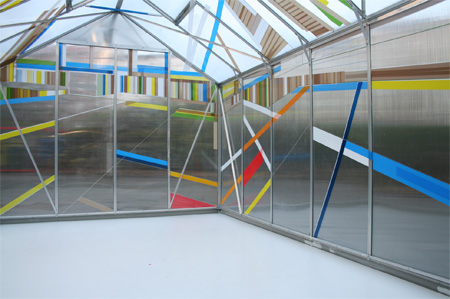
![]()
